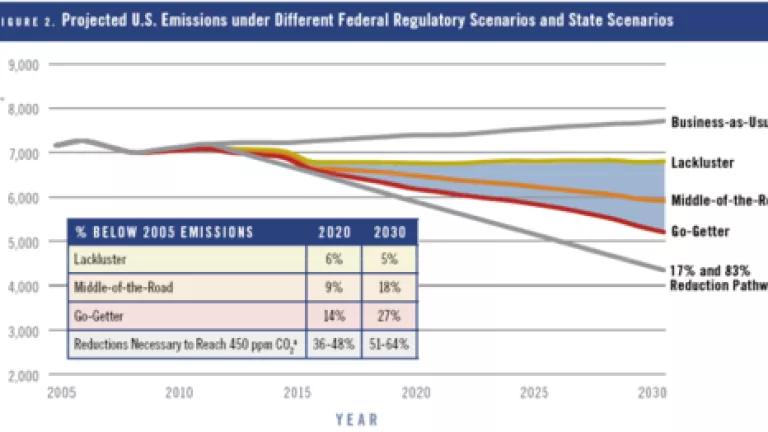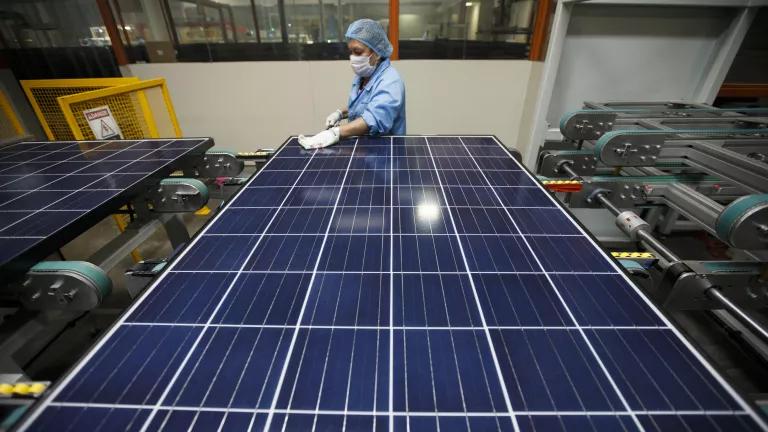
There may be a special place in the hot hell of runaway global warming for the minority of Senators who have blocked the path forward on climate and energy legislation this year.
As NRDC’s Peter Lehner said yesterday: “They are fiddling while Rome burns. Their failure means that we will continue to send a billion dollars a day overseas to buy oil, that China will continue to race ahead in creating the jobs of the future, and that pollution will continue to increase at home.”
The Senate’s continuing failure to pass new legislation makes it all the more important that the Obama administration protect and use the tools it has now under the Clean Air Act and other laws already on the books. Through these laws, the Environmental Protection Agency and other federal departments can take a big bite out of the pollution that is driving global warming.
In short, we desperately need a new law to do the whole job, but we can and must get started with the tools we already have.
A study released today by the World Resources Institute shows that the federal and state governments can get most of the way to a 17 percent reduction from 2005 emission levels by 2020 – the target President Obama committed to meet in the Copenhagen Accord last December, and embodied in the now-stalled climate and energy legislation. The report, Reducing Greenhouse Gas Emissions in the United States Using Existing Federal Authorities and State Action, examines the major sectors and activities that contribute most to our country’s carbon pollution inventory. It considers a range of pollution-cutting measures available in each area, representing a range of ambition – from “lackluster” to “middle-of-the road” to “go-getter” – and sums up the achievable emission reductions.
The WRI report considers, for example, what the Energy Department can do to increase the efficiency of electricity-hogging appliances, and what the Federal Aviation Administration can do to cut fuel consumption in air travel. But the biggest opportunities are to reduce carbon pollution from power plants, vehicles, and a handful of major industries, using the Clean Air Act.
When it wrote the Clean Air Act nearly four decades ago, Congress gave the Environmental Protection Agency the tools and the responsibility to protect the American people when science shows that new pollutants pose dangers to their health or environment. The Supreme Court upheld this authority in its landmark 2007 global warming decision, Massachusetts v. EPA. The Court ordered EPA to decide, based on the science, whether carbon dioxide and other heat-trapping pollutants endanger our health and welfare. EPA made the endangerment determination in December 2009, after a painstaking and thorough scientific review.
EPA took the first giant steps to curb emissions last March, when it issued new standards to cut heat-trapping pollution from new cars and SUVs, together with new fuel economy standards from the Transportation Department. New vehicles will emit 30 percent less carbon pollution by model year 2016. President Obama announced these standards with broad support from carmakers, the auto workers, states, and environmentalists at a May 2009 Rose Garden ceremony that I have called the Clean Car Peace Treaty. A year later, the president came back to the Rose Garden to announce plans for a second round of clean car standards extending through 2025, and for the first-ever carbon pollution standards for heavy trucks, ranging from delivery vans to 18-wheelers.
Now the focus is moving to power plants, oil refineries, and other large industrial carbon polluters. Starting next January, when companies build or expand the biggest new pollution sources, they will have to install the "best available control technology" (BACT) for carbon dioxide and the other global warming pollutants. This is nothing fancy. Large new or expanded facilities simply have to use available and affordable control measures to minimize how much more carbon pollution they will add to our overburdened skies. It's nothing more than they've done for decades for other dangerous pollutants like sulfur dioxide.
Over the next several years, EPA will need to set carbon pollution standards – to be implemented in partnership with the states – that apply to the big existing industrial emitters. Power plants and oil refineries are likely to be first up. Court-ordered schedules may be entered as the result of cases pending in the wake of the Supreme Court’s ruling in Massachusetts.
WRI’s study shows that through these measures – together with other steps like reducing production of the “super greenhouse gases” called hydrofluorocarbons (HFCs) – EPA and other federal agencies could cut U.S. carbon pollution by as much as 12 percent by 2020. State action could add another couple of percent, for a total of up to 14 percent by 2020, under the “go-getter” scenarios. The report emphasizes that there are other measures available that WRI did not examine, which could produce further reductions. WRI also acknowledges that efforts under the Clean Air Act and other existing laws could yield smaller reductions.
There are plenty of obstacles to achieving these results under current law. Industries, right-wing groups, and some of our most far-out political leaders are already suing over EPA’s endangerment determination, the car standards, and every other step the agency takes. Litigation is par for the course, a waste of resources, but rarely successful.
The greater threat is that some in Congress want to repeal or suspend the Clean Air Act. The Senate wisely rejected Senator Lisa Murkowski’s bid last month to flout the science, overturn the Supreme Court’s decision, and block EPA from carrying out the law of the land. And yesterday a House appropriations subcommittee rejected a similar amendment.
But many industries are still hoping for Clean Air Act exemptions. They are backing a bill by Senator Jay Rockefeller that would stop all current work at EPA on new standards for two years, effectively delaying any real action for at least four years in total.
President Obama pledged last May that while working for legislation: “I’m going to take every sensible, responsible action that I can use -- that I can take using my authority as President to move our country in the right direction. That’s what we’ve done today. That’s what we’re going to continue to do in the days, weeks and months ahead.” And yesterday Carol Browner, Assistant to the President for Energy and Climate, said that the Administration “will continue to use our existing tools to address these problems.”
That’s what we need. But we also need a clear, unequivocal signal that President Obama opposes and will veto any legislation that tampers with these tools.
Update July 23, 11pm: POLITICO reports tonight that "President Barack Obama would veto legislation suspending the EPA's plans to write new climate change rules, a White House official said on Friday." Welcome news.
It’s bad enough if the Senate cannot go forwards on climate and energy legislation. But there will be an even hotter place in climate hell for Senators or Representatives who want to go backwards and strip away the laws on the books today to protect our children from the disaster that awaits them.



